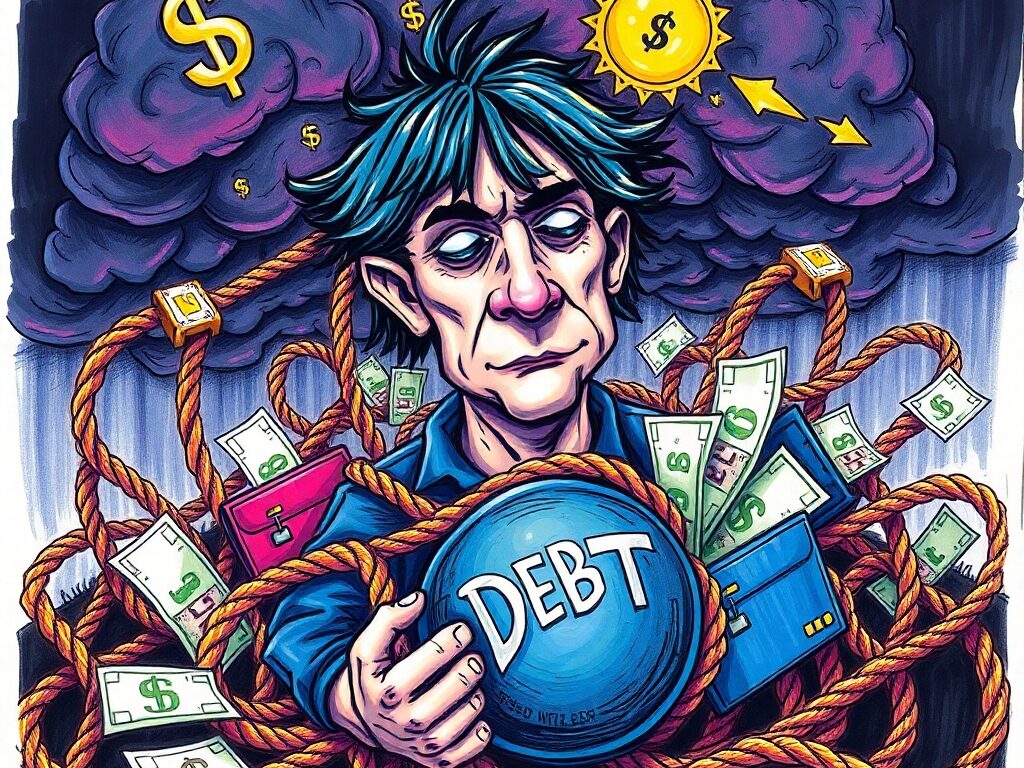In today’s fast-paced world, managing personal finances effectively has become more critical than ever. Debt, when used wisely, can be a powerful tool to achieve financial goals, but it can quickly spiral into a trap if not handled responsibly. Let’s explore practical ways to avoid falling into debt traps and ensure long-term financial stability.
The man who never has money enough to pay his debts has too much of something else.
James Lendall Basford
What Is a Debt Trap?
A debt trap occurs when a person borrows more than they can repay, leading to a cycle of borrowing just to meet existing obligations. High-interest rates, insufficient income, and poor financial planning often exacerbate this situation. Debt traps can affect credit scores, mental health, and overall financial freedom.

Debt traps often result from living beyond one’s means, excessive borrowing, or lack of financial discipline. Recognizing the early warning signs and taking preventive measures can help individuals steer clear of this financial pitfall.
Common Causes of Debt Traps
- Living Beyond Means: Spending more than your income can lead to heavy reliance on credit cards or loans.
- High-Interest Loans: Payday loans, credit card debt, or personal loans with high-interest rates can escalate repayment amounts.
- Lack of Emergency Funds: Unexpected expenses, such as medical emergencies, can force you to borrow.
- Over-leveraging: Taking on multiple loans or using one loan to repay another.
- Poor Financial Discipline: Impulse buying and lack of budgeting often contribute to unnecessary debt accumulation.
Viewing borrowing as an acceptable way to indulge in luxuries, such as lavish holidays or expensive cars, can lead to high-interest debt that strains finances. Many fall into a downward spiral of debt, resulting in deteriorating personal finances and relationships.
Tips to Avoid Debt Traps

1. Create and Stick to a Budget
Track your income and expenses meticulously. Allocate funds for necessities, savings, and discretionary spending. Tools like mobile apps or spreadsheets can simplify budgeting.
2. Build an Emergency Fund
Set aside 3-6 months’ worth of expenses to cover unforeseen circumstances. This reduces reliance on loans during emergencies.
3. Avoid Impulse Purchases
Practice mindful spending. Before making a purchase, ask yourself if it’s a need or a want. Delaying purchases often helps in avoiding unnecessary expenses.
4. Pay Off Debts Strategically
Use methods like the snowball (paying off small debts first) or avalanche (paying off high-interest debts first) to reduce outstanding amounts efficiently.
5. Borrow Wisely
- Choose loans with lower interest rates.
- Understand the terms and conditions before borrowing.
- Avoid payday loans or loans with hidden fees.
6. Use Credit Cards Responsibly
Credit cards can be beneficial if used wisely. By utilizing the interest-free grace period and setting a personal spending limit, individuals can benefit from credit cards while maintaining control over their expenses. Pay off your credit card bills in full every month to avoid interest charges. If you cannot pay in full, ensure you pay more than the minimum amount due.
7. Avoid Loan Overlap
Take on one loan at a time. Ensure you have the capacity to repay the first loan before considering another.
8. Increase Financial Literacy
Learn about managing money, investments, and savings through books, online resources, or financial advisors. An informed individual is less likely to make financial mistakes.
9. Assess Borrowing Capacity
Assess your ability to take on new debt by calculating potential monthly EMI commitments based on a thorough understanding of income, expenses, and savings. This ensures that borrowing remains within manageable limits.
Early Signs of a Debt Trap
- Relying on Credit for Essentials: Using credit cards or loans to pay for groceries or utilities.
- Minimum Payments: Paying only the minimum amount due on credit card bills.
- Borrowing to Repay: Taking one loan to settle another.
- Stress Over Finances: Feeling overwhelmed by monthly bills and repayments.
Breaking Free from a Debt Trap
If you find yourself in a debt trap, take immediate action:
The most important thing is to know that you can always get out of a debt trap, as long as you’re willing to take control of your finances and take the necessary steps toward financial freedom.
Robert Kiyosaki
1. Take Responsibility
The first step is to take ownership of your situation. Communicate transparently with your loved ones, understand your debts, and seek assistance in planning your way out.
2. Assess Your Financial Situation
List all your debts, interest rates, and monthly obligations. This gives a clear picture of your liabilities.
3. Negotiate with Lenders
Reach out to banks or creditors to renegotiate loan terms, lower interest rates, or extend repayment periods.
4. Seek Professional Help
Financial advisors or credit counseling services can provide tailored solutions.
5. Adopt a Side Hustle
Increase your income by taking on freelance work, selling unused items, or exploring gig economy opportunities.
6. Cut Non-Essential Expenses
Prioritize needs over wants. Cancel subscriptions, eat out less, and look for discounts or cashback deals.
7. Explore Savings and Sell Non-Essential Items
Consider liquidating non-essential assets to repay high-interest loans faster.
The Long-Term Benefits of Avoiding Debt Traps
Avoiding debt traps not only ensures financial freedom but also improves your quality of life. Here are some key benefits:

- Peace of Mind: No constant worry about repayments.
- Improved Credit Score: Paves the way for better financial opportunities.
- Savings Growth: More funds for future goals and investments.
- Financial Independence: Greater control over your life and decisions.
Final Thoughts
Debt is a double-edged sword. When used responsibly, it can help achieve aspirations; when mismanaged, it can lead to financial turmoil. By practicing disciplined financial habits, building a safety net, and seeking timely help, you can avoid falling into debt traps and work toward a secure and prosperous future.
Take control of your finances today – because a debt-free life is a stress-free life
















